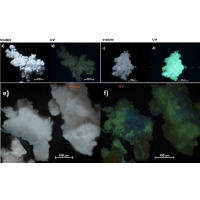Science meets art: the case of ZnO
 In the world of art conservation, a tiny particle of white paint can reveal centuries-old artistic secrets. A collaborative effort between the C2RMF and the Low Dimensional Oxides research group from INSP has shed new light on zinc white (ZnO), a pigment developed in the 19th century.
In the world of art conservation, a tiny particle of white paint can reveal centuries-old artistic secrets. A collaborative effort between the C2RMF and the Low Dimensional Oxides research group from INSP has shed new light on zinc white (ZnO), a pigment developed in the 19th century.
In this study, ZnO nanopowders – that were obtained at the INSP under strongly controlled synthesis conditions – were used as a model system to compare with about fifty historical and modern samples. This research has uncovered unexpected complexities regarding the physicochemical properties of this white pigment and their variability within the studied samples. The findings not only provide insights into the artistic practices of the time but also offer new avenues for better identifying this pigment in major works from the 19th and 20th centuries. As conservators strive to safeguard our cultural heritage, this research provides crucial information for the proper preservation of some of the world’s most valuable artworks.
Caption:
Optical microscope images (20x, under visible light at left, under UV at right) of the reference samples: a-b) Brüggemann indirect ZnO; c-d) Brüggemann direct ZnO; e-f) ZnO nanopowders synthesized at INSP.
Reference
“An analytical survey of zinc white historical and modern artists’ materials”
Nicoletta Palladino, Mathilde Occelli, Gilles Wallez, Yvan Coquinot, Quentin Lemasson,
Laurent Pichon, Slavica Stankic, Victor Etgens and Johanna Salvant
Heritage Science (2024) 12:47
Contact
slavica.stankic(at)insp.jussieu.fr

